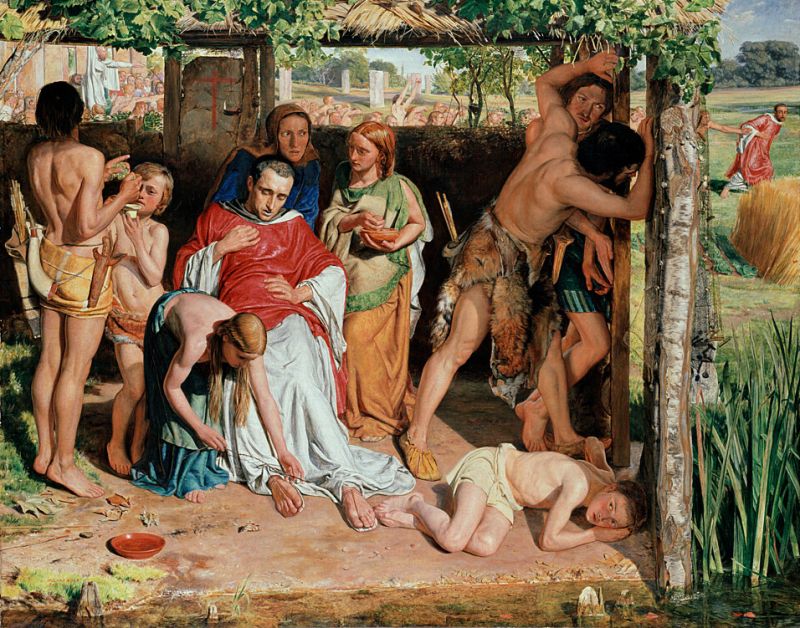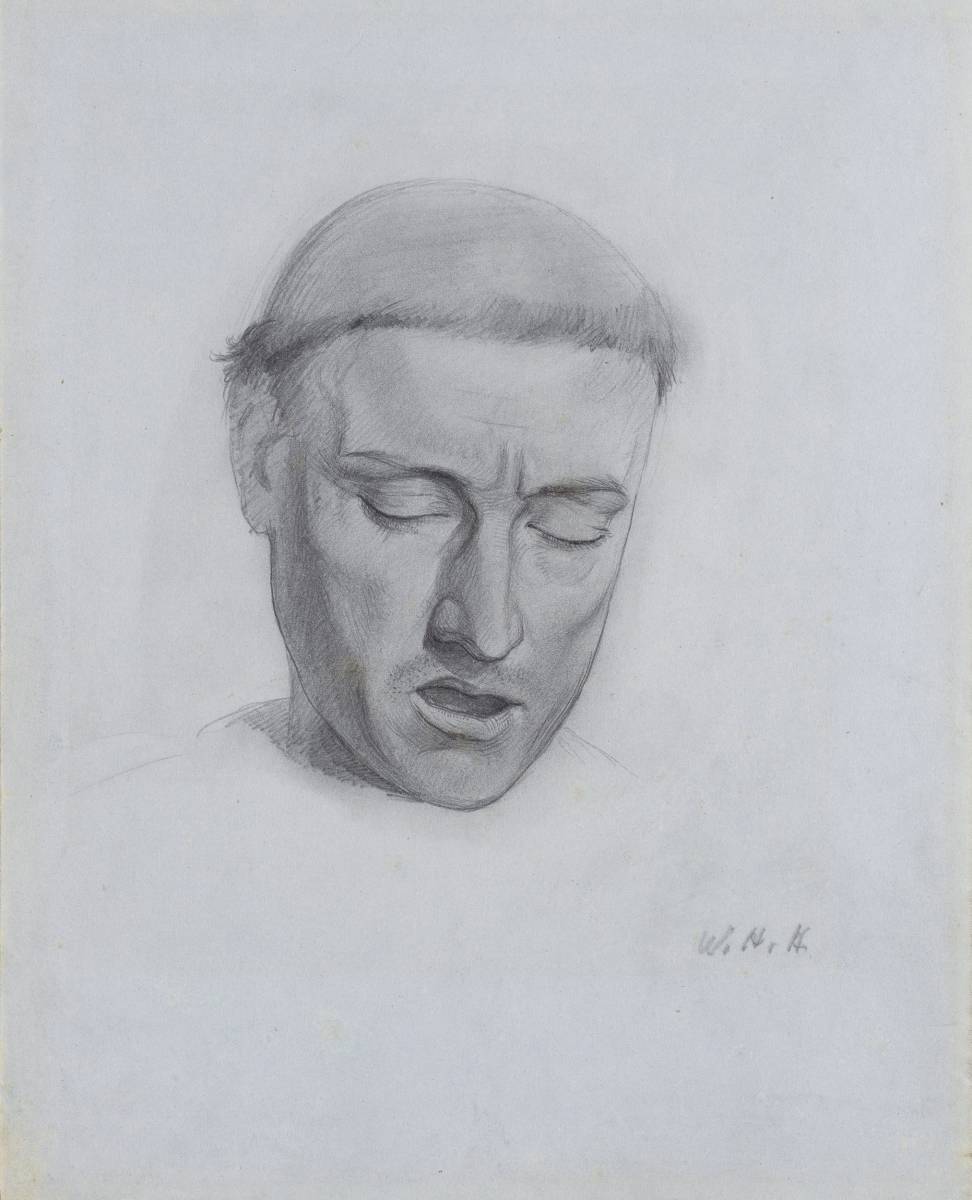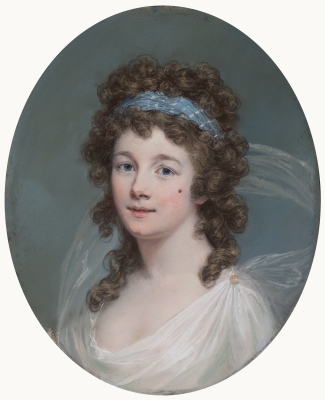This carefully worked drawing was made by William Holman Hunt in December 1849 in preparation for his first great religious painting A Converted British Family Sheltering a Christian Missionary from the Persecution of Druids shown at the Royal Academy in 1850 and now in the collection of the Ashmolean, Oxford. The painting was made whilst Hunt was at the beginning of his career and working in daily contact with a small group of like-minded artists who called themselves the Pre-Raphaelite Brotherhood (PRB). Hunt wrote vividly of this period chronicling the series of paintings members of the PRB were intensely preparing for the Royal Academy’s annual exhibition, which included John Everett Millais’s Christ in the House of his Parents (Tate, London). Incisively modelled in pencil on pale blue paper, this head study shows Hunt’s initial idea for the central figure in his composition, the head of the missionary. Made in the first flush of enthusiasm for the PRB and their aims, this drawing remained an important work for Hunt, who reproduced it in a plate in his 1905 work Pre-Raphaelitism and the Pre-Raphaelite Brotherhood.

William Holman Hunt
A converted British Family sheltering a Christian Missionary
from the Persecution of the Druids
Oil on canvas
43 ⅞ x 55 ½ inches; 1110 x 1410 mm
1850
Bequeathed by Mrs Thomas Combe, 1893.
© Ashmolean Museum, University of Oxford
In December 1849 William Michael Rossetti reported in the P.R.B. Journal that Hunt had begun ‘the head of the Preacher’ in his Druids. This may well be a reference to the present drawing, which Judith Bronkhurst has suggested may well depict ‘Old Williams’ who also sat for figures in Hunt’s Rienzi. Hunt later wrote about the period during which he was working on A Converted British Family: ‘Millais came back to town late in the autumn… and had finished much of the background of his picture of ‘Ferdinand lured by Ariel’, the figures of which he proceeded with by day, while at night he drew and completed the design of ‘Christ wounded in the House of his Friends.’ My ‘Druid’ picture was so full of varying figures that without constant application it was certain it could not be completed in time. When the sun shone I had not only to paint my portion of work for the day, but to make notes of tones and lines of shadow to serve me for the days which were only cloud-lit; by night I worked out the beech-post with the net hung on it casting its shadow inside, and to make sure of completing the distant crowd of ancient Britons, I took occasion to use some of my evening visitors as models.’[1] William Michael Rossetti recorded that he posed on 7 April 1850 for the ‘head and hands’ of the principal missionary fleeing in the background and Charles Allston Collins was the model for ‘the hindermost savage.’[2]
Hunt produced a full compositional sketch for the painting (Johannesburg Art Gallery), the current sheet is the only known preparatory drawing Hunt made for an individual element. Hunt shows the head of the missionary tonsured and drawn with an anguished open mouth, this is in contrast to the finished painting. Judith Bronkhurst has suggested that Hunt altered the figure in the final painting ‘to avoid accusations of Romantist tendencies, and the decision not to inscribe [the painting] with the initials P.R.B. may have been prompted by the realisation that their meaning was about to be revealed. The association of the word ‘Brotherhood’ with monasticism unleased a storm exacerbated by the tense situation created in the High Church by the ramifications of the Gorham Judgment.’[3] This drawing therefore offers a fascinating insight into the way Hunt developed his composition, moderating the narrative in light of strengthening public opposition to Pre-Raphaelitism. Hunt evidently regarded this drawing as a powerful work, made at the height of his devotion to Pre-Raphaelitism, retaining it in his studio and publishing it in 1905.
References
- William Holman Hunt, Pre-Raphaelitism and the Pre-Raphaelite Brotherhood, London, 1905, vol.I, p.194.
- Judith Bronkhurst, William Holman Hunt: A Catalogue Raisonné, New Haven and London, 2006. Vol.I, p.134.
- Judith Bronkhurst, William Holman Hunt: A Catalogue Raisonné, New Haven and London, 2006. Vol.I, p.134.


